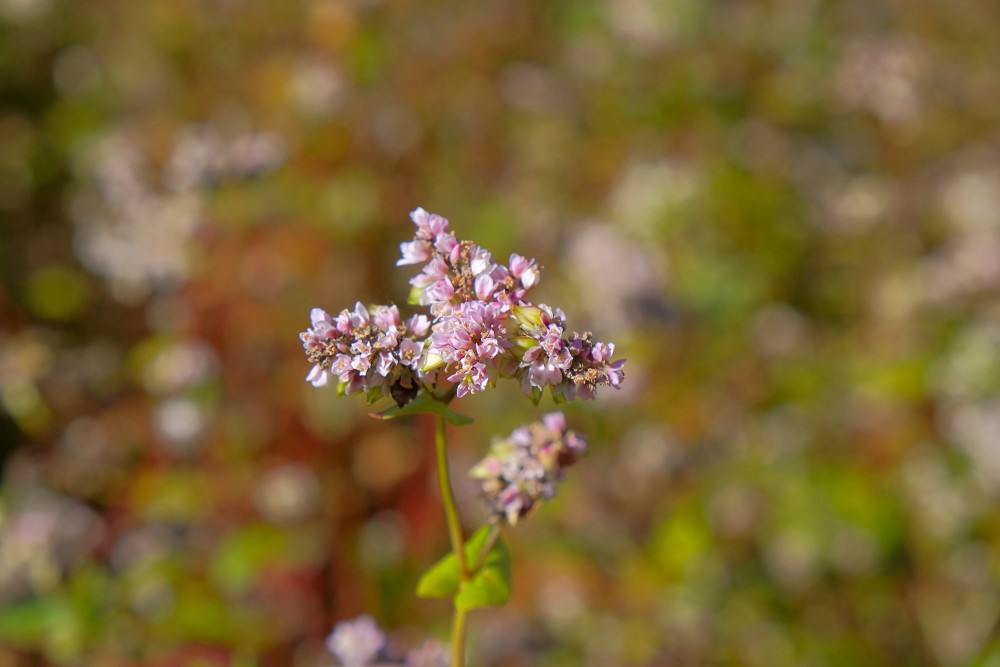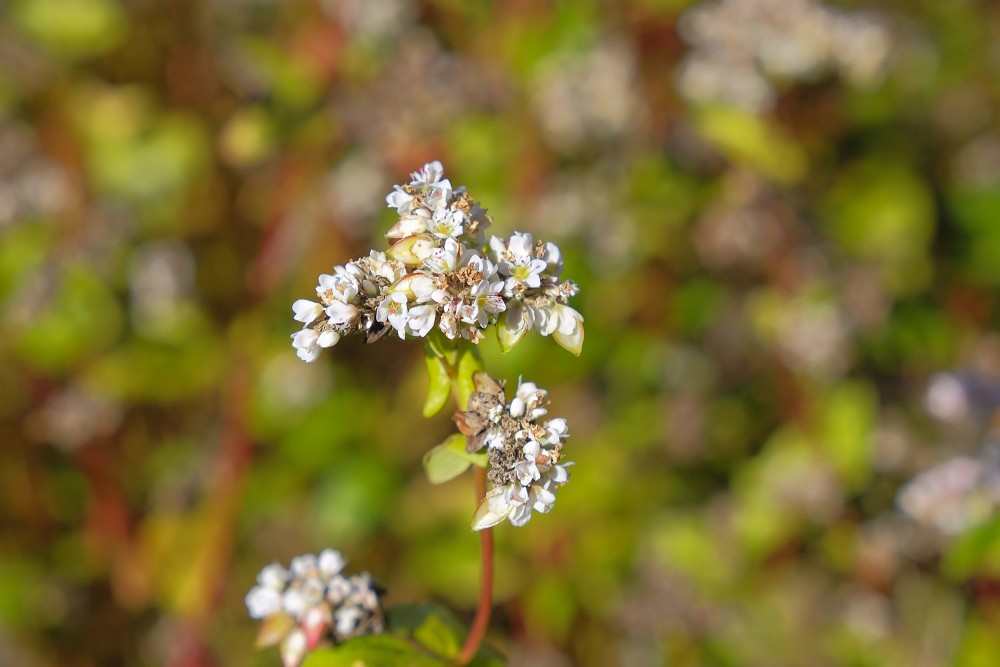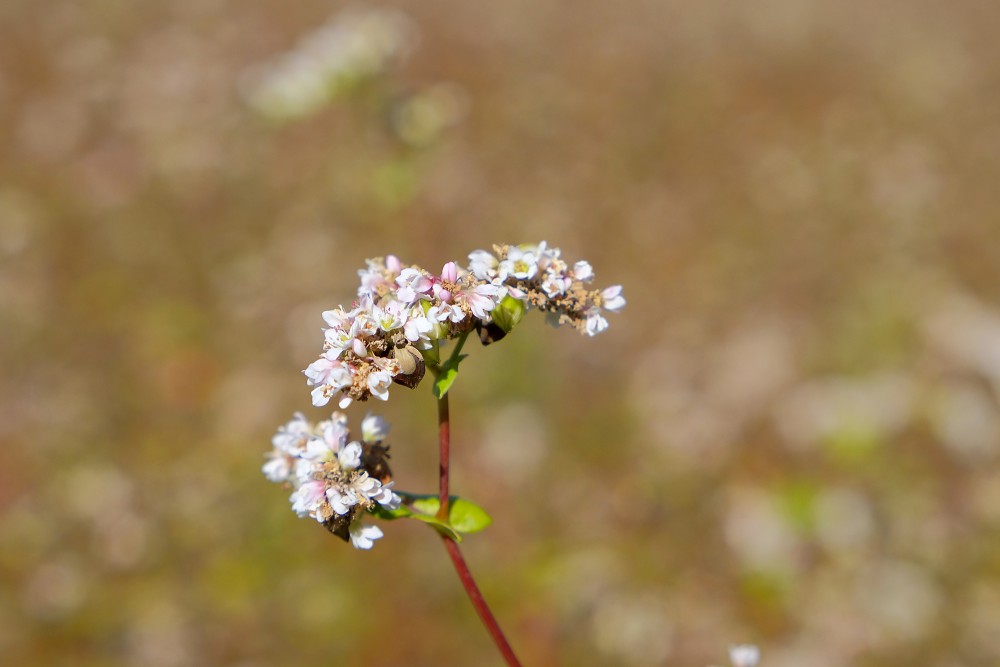Buckwheat (Fagopyrum esculentum)
Buckwheat (Fagopyrum esculentum), also known as common buckwheat, Japanese buckwheat and silverhull buckwheat,[2] is a plant cultivated for its grain-like seeds and as a cover crop. A related and more bitter species, Fagopyrum tataricum, a domesticated food plant common in Asia, but not as common in Europe or North America, is also referred to as buckwheat.
Despite the name, buckwheat is not related to wheat, as it is not a grass. Instead, buckwheat is related to sorrel, knotweed, and rhubarb. Because its seeds are rich in complex carbohydrates, it is referred to as a pseudocereal.
The cultivation of buckwheat grain declined sharply in the 20th century with the adoption of nitrogen fertilizer that increased the productivity of other staples.
Scientific classification
Kingdom: Plantae
Clade: Angiosperms
Clade: Eudicots
Order: Caryophyllales
Family: Polygonaceae
Genus: Fagopyrum
Species: F. esculentum
Cultivation
Buckwheat, a short-season crop, does well on low-fertility or acidic soils, but the soil must be well drained. Too much fertilizer, especially nitrogen, reduces yields. In hot climates it can be grown only by sowing late in the season, so that it blooms in cooler weather. The presence of pollinators greatly increases the yield. The nectar from buckwheat flower makes a dark-colored honey. Buckwheat is sometimes used as a green manure, as a plant for erosion control, or as wildlife cover and feed.
The plant has a branching root system with a primary taproot that reaches deeply into moist soil. Buckwheat has triangular seeds and produces a flower that is usually white, although can also be pink or yellow. Buckwheat branches freely, as opposed to tillering or producing suckers, causing a more complete adaption to its environment than other cereal crops. The seed hull density is less than that of water, making the hull easy to remove.
Buckwheat is raised for grain where a short season is available, either because it is used as a second crop in the season, or because the climate is limiting. Buckwheat can be a reliable cover crop in summer to fit a small slot of warm season. It establishes quickly, which suppresses summer weeds. Buckwheat has a growing period of only 10–12 weeks and it can be grown in high latitude or northern areas. It grows 30 to 50 inches (75 to 125 cm) tall.
Production
In 2016, world production was 2.4 million tonnes, led by Russia with 50% of the world total and China with 17%.
en.wikipedia.org







